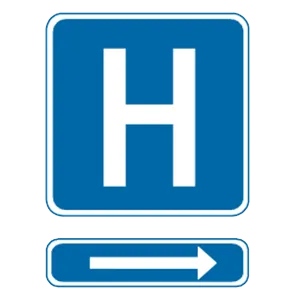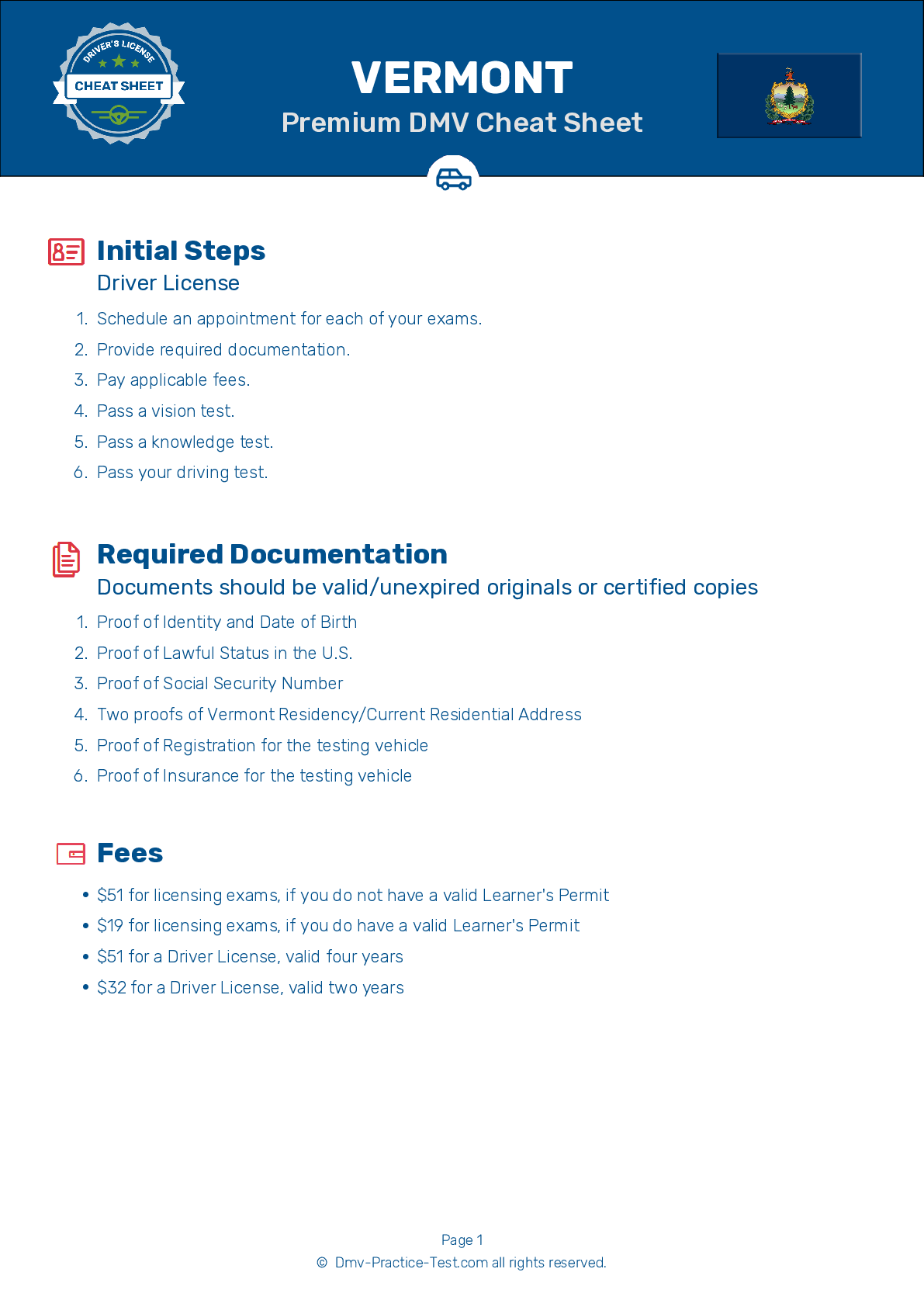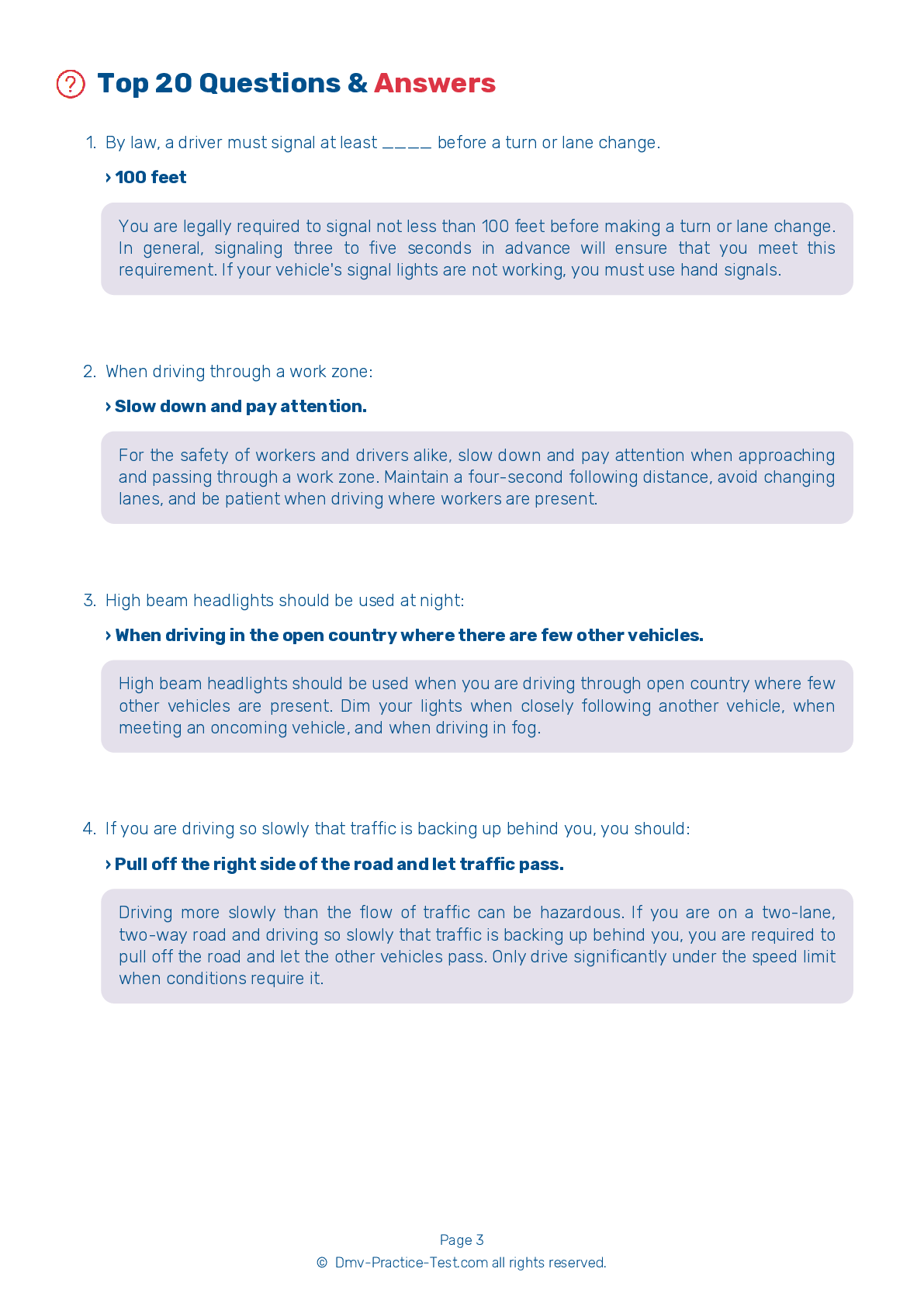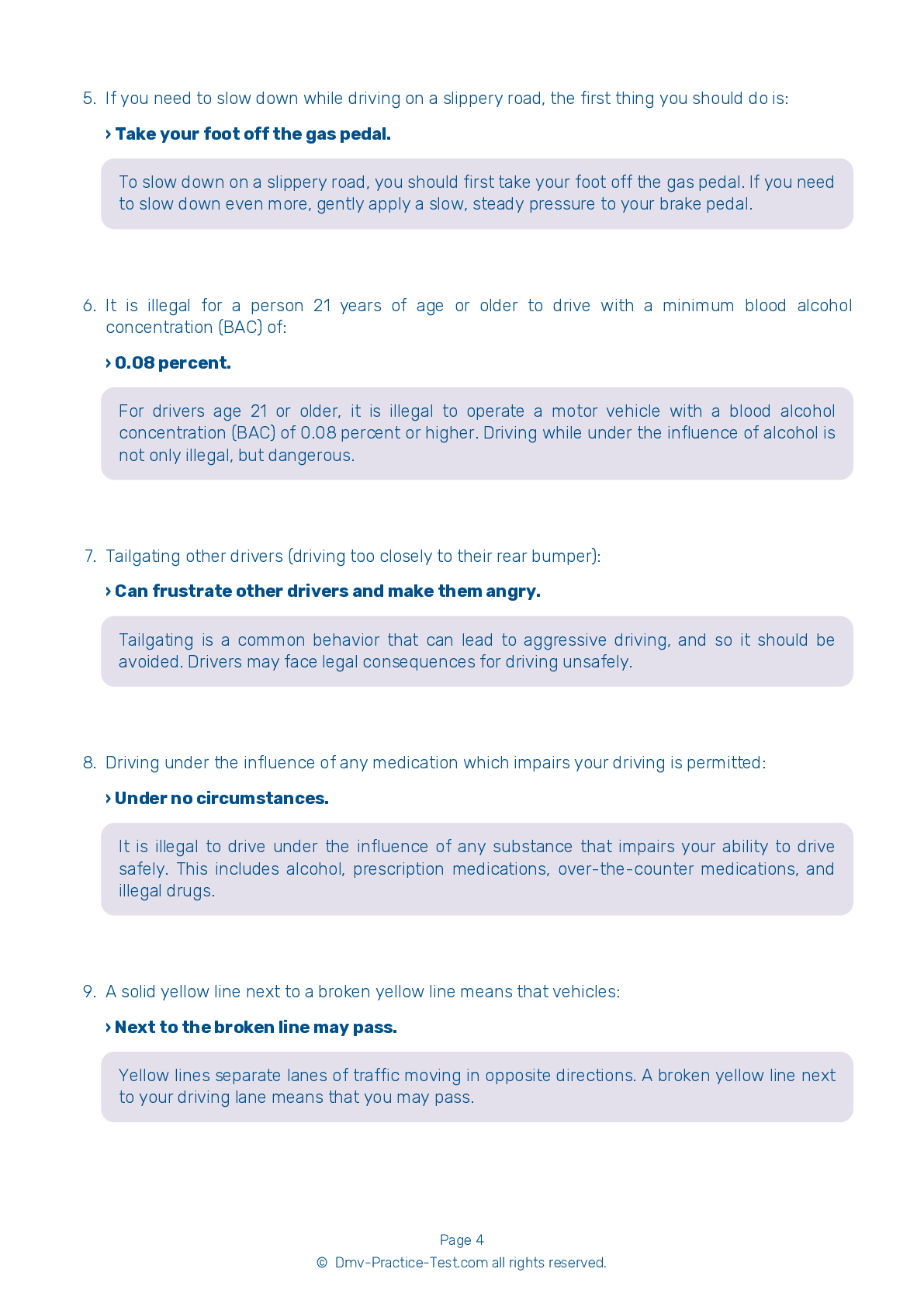FREE Vermont DMV Practice Test #10 Page 3 of 3
The Vermont DMV practise examinations have been updated for January 2025. It includes questions based on the Vermont Driver Handbook's most significant traffic signals and legislation for 2025. Use actual questions that are very similar (often identical!) to the DMV driving permit test and driver's licence exam to study for the DMV driving permit test and driver's licence exam.
On the practise exam, each question gets a tip and explanation to help you remember the concepts. The written component of the official Vermont DMV test will include questions about traffic rules, traffic signs, and driving statutes, as well as knowledge from the Driver Handbook.
To obtain a passing grade, you must correctly answer 16 of the 20 questions. Use the practise exam provided by the Vermont Department of Motor Vehicles to help you prepare for your instruction permit or driver's licence.
The DMV exam is available in several languages.
Using any kind of testing assistance will result in an automatic fail, and the DMV may take additional action against your driver's licence, so stay away from it.
14 . Most fatal crashes involving a large truck and passenger vehicle:
In more than 70 percent of fatal crashes involving both a passenger vehicle and a truck, it was the driver of the passenger vehicle, not the truck driver, who caused the crash. Allow a cushion of space when driving near a large truck.
15 . The amount of space you need to cross traffic depends on the:
The amount of space you need to cross traffic depends on the road conditions, weather conditions, and oncoming traffic.
16 . A driver should be extra alert to motorcyclists, bicyclists, and pedestrians because:
In many collisions with motorcycles, bicycles, and pedestrians, drivers reported that they were looking but still did not see the smaller vehicle or pedestrian. These can be more difficult to spot in traffic than passenger vehicles because they are smaller, may move faster, and have less noticeable lighting. To prevent collisions with these smaller and less protected road users, drivers should always be alert to the presence of motorcycles, bikes, and pedestrians.
17 . When making a turn, you must ____ your speed.
When turning, you should reduce to a speed that allows you to maintain control of your vehicle, stay in your lane, and react to unexpected situations.
18 . At a railroad crossing, a motorist:
When stopping at a railroad crossing, you must stop at least 15 feet from the nearest rail. Come to a complete stop if you can see a train or hear its whistle, if there is a stop sign, or if flashing lights, lowered gates, or a flagger indicate that a train is approaching. It is illegal to drive through, around, or under a lowered gate.
19 . This sign means:

This sign indicates that hospital emergency services are located to the right.
20 . The best way to avoid hydroplaning is to:
When roads are wet, cars take a longer distance to stop and may skid on quick turns. Do not use cruise control when driving under wet or icy conditions. Reduce your speed and drive with caution.
Need Car Insurance? No problem!
Compare the best rates in Vermont and find a personalized policy that meets your needs.
1. Are You Currently insured ?
2. Married ?
3. Do you own your Home?
4. Do you have more than 1 car ?
5. Have you or a Family Member Honorably Served in U.S. Military ?
6. Your Name
7. Age
8. Zip code
IMPORTANT REMINDER:Auto Insurance is Mandatory to drive in Vermont. Get covered before you hit the road to avoid any fines.
Ranked by best match
2025 Vermont | Frequently Asked Questions
1. Not checking mirrors and blind spots before changing lanes or turning.
2. Speeding or driving too slowly for the conditions or posted speed limit.
3. Not coming to a complete stop at stop signs or red lights.
4. Incorrect signalling or not signalling at all.
5. Poor parking, especially parallel parking.
Remember, practice makes perfect, so take time to hone your skills.



